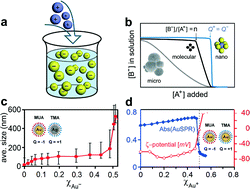Charged nanoparticles crystallizing and controlling crystallization: from coatings to nanoparticle surfactants to chemical amplifiers
Abstract
Metal nanoparticles functionalized with self-assembled monolayers of ligands terminated in charged groups constitute a unique class of nanoscopic polyions – or “nanoions” in short – capable of assembling into higher-order structures ranging from two-dimensional coatings on various types of surfaces (including chemically inert polymers as well as inorganic microcrystals) to three-dimensional nanoparticle crystals. These crystals can comprise either spherical or non-spherical nanoparticles, can feature unusual particle arrangements (e.g., diamond-like), and – after already being assembled – can be further “post-processed” to act as chemical sensors of unmatched sensitivity. This “post-processing” of the crystals involves functionalization with dithiols that bridge nearby particles but are cleavable in the presence of either small-molecule or enzyme analytes. When the dithiols are cut, the NP crystals disintegrate into tens of millions of brightly colored individual particles translating the presence of few analyte molecules into a macroscopic color change readily detectable to the naked eye. Demonstrations such as this one illustrate what we believe should be the future of nanoscale assembly – namely, synthesis of structures in which nanoscopic components enable new and useful functions.

- This article is part of the themed collection: Colloidal Self- Assembled Supracrystals and Heterostructures

 Please wait while we load your content...
Please wait while we load your content...